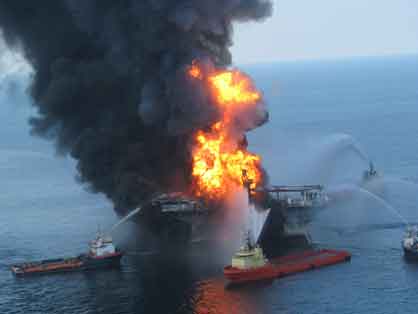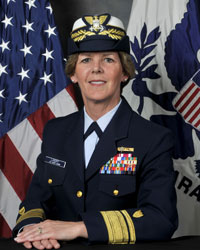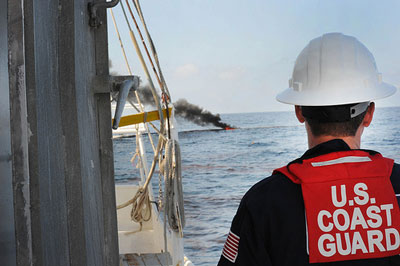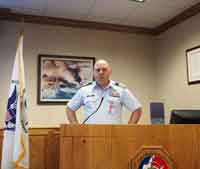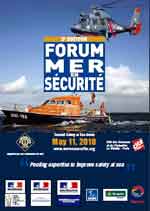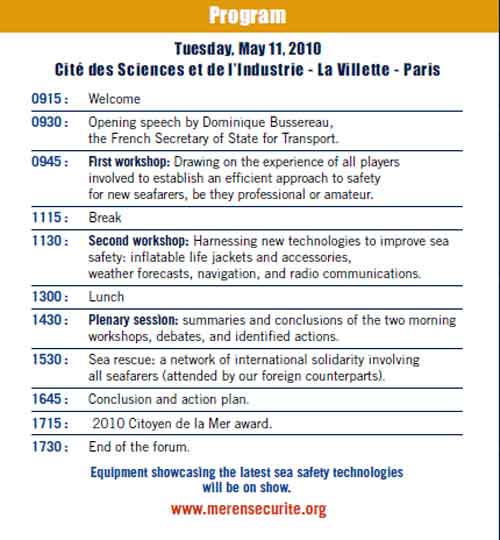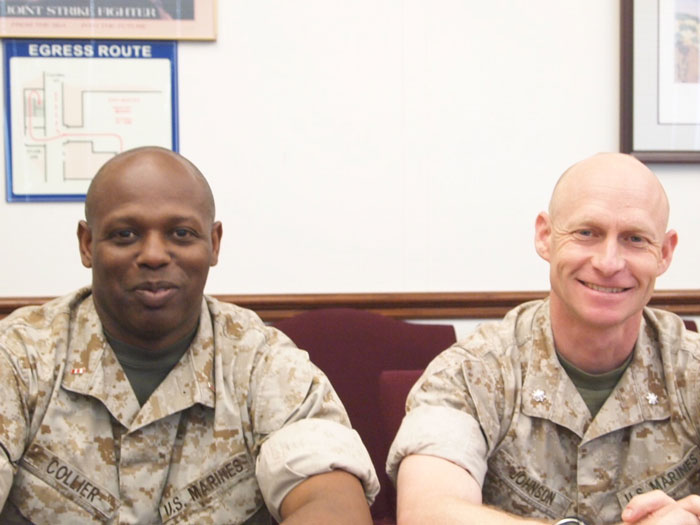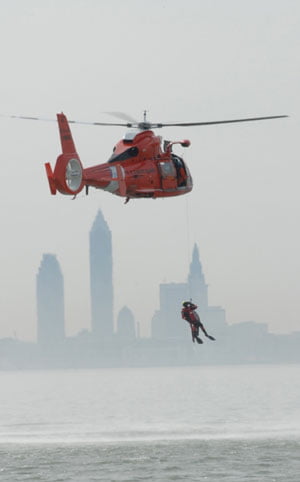How the USCG Addresses Aviation Training and Support: The Case of the ATTC in Elizabeth City, North Carolina
In mid-March, SLD discussed the U.S. Coast Guard’s evolving approach to training technicians and to shaping an effective maintenance enterprise with the retiring (but only in the separation from service meaning of the word) Captain Joe Mihelic, Commanding Officer of the Aviation Technical Training Center (ATTC). Also contributing significantly to our understanding of the role of the ATTC was the ex to the unit, LCDR Daniel Leary.
For a non-coastie, what is immediately noticeable is that the ATTC is co-located with the Aviation Logistics Center for the entire USCG. And in the course of visiting both facilities, it was clear that the USCG benefits from synergy between the two.
According to the website of the ATTC:
The primary mission of ATTC is the safe and effective maintenance of the Coast Guard’s aviation fleet. The quality of our graduates directly impacts the performance of our aviation resources today, tomorrow, and years into the future. This is a tremendous challenge to which we remain rigidly committed. To meet that challenge, we strive to ensure that each graduate meets the extensive requirements expected by the twenty-five U.S. Coast Guard aviation units across the country.
[slidepress gallery=’uscg-attc’]
SLD: Could you explain the role of ATTC?
Captain Mihelic: The purpose of the ATTC is to provide journeymen level and advanced maintenance aviation enlisted maintenance technicians to the field units. Obviously, we have a very short period of time to take people who are green and get them out to the field, and give them the basic traits they need to perform out to the operational Coast Guard.
SLD: How long is the training set?
Captain Mihelic: For basic A-school where we teach to the journeyman level, it takes:
- 18 weeks for ASTs or Aviation Survival Technicians,
- 20 weeks for our AMTs or Aviation Maintenance Technicians
- and 20 weeks for our AETs, which are our Avionics Electrical Technicians.
So those are the three aviation rates that we have in the Coast Guard.
Right now, everybody who goes into Coast Guard aviation, from a maintenance perspective, enlisted side, comes through ATTC. It’s one-stop shopping. We are a small service : if you think about the 45,000 people in the Coast Guard, about 2,800 of those billets are in aviation, with 800 pilots and about 2,000 enlisted.
SLD: So, this facility trains for the whole Coast Guard?
Captain Mihelic: This facility teaches all the aviation enlisted maintenance A-schools for the entire Coast Guard. Historically, at the advanced level or C-school level, the Coast Guard has focused primarily on rotary wing training and have done most of our investment in those training aids. Over the last 10 to 15 years, as the model for ALC [Aviation Logistics Center] has changed to take on the depot level work for all aviation assets, it’s been a challenge to catch up and try to develop a fixed wing training capability — a proper fixed wing training capability with the same type of training aids that reflect the current fixed wing assets we have in the field.
SLD: So, that’s the C130?
Captain Mihelic: That’s the C130, the Casa, and the Falcon jet. Obviously, with acquisition reform there’s been a renewed emphasis on writing the requirements and getting the acquisition plans updated, to get those types of training aids in the budget. Specifically on the Casa side of the house, we’ve done a lot of work in that regard to document those requirements and to get that acquisition plan updated.
These are long-term initiatives– nothing short-term, but in the long run, it will prevent us from having to do death by PowerPoint, and then working and taking C-schools down to ALC to physically look at an aircraft that’s going through the depot facility. That’s what we’re trying to avoid.
SLD: How is training changing with the Casa aircraft coming in or the HC130-J coming in? Are there changes to how you’re doing business?
Captain Mihelic: There’s really two pieces to classroom training. You have initial theory and procedural training. Historically, here at ATTC we’ve presented a lot of material using PowerPoint. So we’re trying to look at programs like Engrain and computer-based training that allows a 3D modeling perspective that is more interactive and much more realistic.
For the courses we currently teach, training is presented in the classroom; everybody comes to ATTC and the entire course is taught here.But the wave of the future may be to take a one-week course prior to getting here with a good computer-based e-learning type environment to get prepped to come to school and then get into the meat of the course subjects.
SLD: One aspect of the MPAs and the new Js is that you have more sophisticated, more complicated mission capabilities in both aircraft. How does that affect training?
Captain Mihelic: If you look at CG Modernization, it links all the training centers. There’s a fine line between maintenance training and operator training. You see that in more of the mission system pallet and the avionics type gear. Our maintainers are our operators and they need an understanding of both troubleshooting/repair and operation.
We really want ATC Mobile to be the lead and train on how to use the equipment from an operational standpoint and be very proficient in that. When the operators have problems though, it’s those same people that will troubleshoot and try to repair the equipment or work with contractors to swap boxes and resolve the software integration problems.
So collectively, we need to be linked closely with ATC Mobile. If they’re giving operator training and they’re seeing a specific type of problem, we have to incorporate that type of problem into our maintenance troubleshooting so that they’re prepped to handle that when they see it out on an operational mission.
SLD: What is your core focus within the training effort?
Captain Mihelic: We really focus on the maintenance aspect here at ATTC. The operational training would then be ATC Mobile. The one rate where we really cross boundaries is the AST rate, providing initial Rescue Swimmer training. We teach the basic technical skills necessary to perform a water rescue, which is really operational type training that we’re doing here for the rate.
We instruct through scenario-based training. We give them the basic skills both physical and mental, and provide a lot of training in the pool. The real test is a three-man scenario of a life-saving predicament where we have a member — in a parachute, another person in a raft, and another person floating in the water. Can that rescue swimmer properly think and triage the situation, and go for the person first that’s floating facedown in the water. Then can he get the guy out of the parachute that’s potentially entangled. And then can he handle the raft victim.
So, we give them a very challenging situation with three different people in different situations, and the goal is to save them all. This really is an operational scenario but we limit our operational training.
SLD: So, the technical training is embedded in the real operational scenarios?
Captain Mihelic: Correct. Now on the flipside, ATC Mobile owns the Standardization Team for the Rescue Swimmer Program. They’re the ones that would go out and perform annual Stan Checks at our 25 operational air stations.
So, if there’s a Rescue Swimmer assigned, they’ll be evaluated and given pointers on how to refine their skills and to make sure they’re executing the mission and integrating with the rest of the crew and the pilots. ATC Mobile gets direct operational feedback to enhance their training. Any technical issues identified gets referred back to us for review and potential response.
SLD: You’re close to retiring, and one question that comes naturally to mind is: what’s the difference between the training that you got as a young aviator and a new aviator today?
Captain Mihelic: I started learning to fly in 1984. We did a lot of studying from books and then we jumped in an airplane. We did get some crude simulator time, but the advances in computer technology and computer-based training is light-years ahead of what we had to learn systems and practice flight scenarios. Today, we have tools to make flight handbooks come alive. In the old days, you just read and studied a lot.
At ATC Mobile, there have been tremendous advances in their simulator capabilities, especially visual simulation, it’s much more realistic. We may not yet match some of the advanced simulation capabilities that some of the airlines have where they can get people certified to land jets without actually flying in an aircraft, but we have made tremendous advances in that regard.
SLD: You had mentioned earlier that in the acquisition reform, there’s been an effort to highlight actual expenditures for training?
Captain Mihelic: Right. I’m more of a logistician. If you look at the 10 elements of logistics, training is an essential piece. I think we’re doing a better job of documenting the actual requirements and the benefits of training and incorporating that into the budget cycle. It’s easy to buy an aircraft and put it out in the fleet. It’s another thing to make sure all the logistical support is there.
SLD: You have better recognition in logistics and maintenance. Both are an essential part of readiness which enables operational capability.
Captain Mihelic: Definitely.
SLD: And so you need training to have readiness. It’s part of the cycle?
Captain Mihelic: You have to have a full logistics complement to make the asset work and sustain it so that we can effectively put steel on target.
SLD: Final question: what investments would make important improvements on how the Coast Guard could operate more effectively?
Captain Mihelic: If we want to properly invest in training, we have to look at the current list of assets that we have out there operationally. We have to either invest in the infrastructure and the training aids to support those assets or we have to potentially partner with either DOD or civilians, to provide that training. The C-130J may be the best example.
We may never take J training in-house, as long as there’s a pipeline available to provide maintenance training. There is a multinational type of training arrangement that’s contractor based. In this case, it may not be cost effective to pull that training in-house.
But if we’re the sole user and there isn’t any cost-effective commercial provider, we need to develop that organic capability. The Casa may be a good example. We’re implementing new CASA courses in-house, as we operate a unique configuration of the airplane with the glass cockpit that we have. We need to invest in those types of training aids and infrastructure, so that we impact operational missions by trying to teach maintenance procedures on an operational asset.
***
In addition to the interview above, Captain Mihelic and LCDR Leary highlighted several aspects of the ATTC process during a walking tour of the facility. Several of these highlights are captured in the four videos below, which underscore different aspects of the approach of the ATTC.
Video # 1
This first video provides a snapshot of how the co-location of the ATTC with the ALC plays to each other’s advantage. In this video, Captain Mihelic explains that “from an acquisition process point of view, we call this the gold standard. It was one of the brainchild’s of program manager at Aviation Logistics Center. The benefits greatly exceed being a training aid, (… ) for it can function as a test bed (as well).”
Video # 2
In the second and third videos, Captain Mihelic and LCDR Leary explain how the training of maintainers benefits from experienced operates training the new technicians.
Video # 3
Video # 4
In the final video, LCDR Leary explains how a helo assembled from parts from various disabled helicopters allows the trainers to work with confidence that their skill levels will not damage an operational helo. This training test bed helo was built for 12 ½ million dollars from parts provided by the co-located ALC facility.
———-
*** Posted on May 7th, 2010




